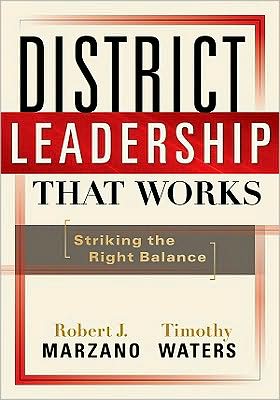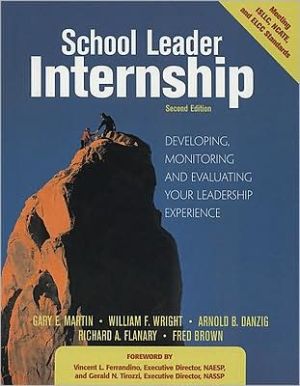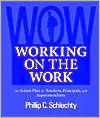Planning and Administering Early Childhood Programs
Comprehensive Edition is Now More Accessible, Practical, and Relevant\ \ New co-authors with experience developing and directing child development centers bring new practical insights and tools to this edition.\ Historical information is reduced, making space for guidelines and forms to give students a real-life experience as they learn about becoming a director.\ More emphasis on developing the program philosophy and carrying it through to other program areas, such as leading staff,...
Search in google:
Planning and Administering Early Childhood Programs, Ninth Edition, is build on the conviction that thoughtful planning and administration are essential to the success of early childhood programs. The authors' main priority is to present the rationale for thoughtful planning and administration. The more administrators know about factors influencing quality programs, the better equipped they will be to plan and administer their own high quality programs.With that in mind, this text addresses all aspects of program administration, taking readers from the earliest stages of planning the facility and identifying the program's goals, through program implementation and evaluation. It is a practical and readable resource intended for students of program administaration as well as practicing program administrators. Both groups will find the book to be a resource that will ensure their success in thier chosen field. Each chapter includes practical Application Activities and refers readers to authoratative websites that enhance and elaborate on topical discussions. Two new co-authors bring additional insights and experience in developing and directing child development centers.Covering a range of topics from developing a mission statement, to financing and budgeting, to furnishing and design, this is a truly comprehensive volume on planning and maintaining a successful early childhood care center.
PREFACE: \ Preface\ Planning and Administering Early Childhood Programs, Seventh Edition, is built on the conviction that thoughtful planning and administration are essential to the success of early childhood programs. Our main priority is to present the rationale for thoughtful planning and administration. The more administrators know about factors influencing quality programs, the better equipped they will be to plan and administer programs. From our perspective, each child, parent, staff member, and sponsor deserves nothing less. Because we know how important planning is, we are committed to helping new and experienced administrators and students of administration make sense of what they are doing.\ TEXT ORGANIZATION\ The text begins with a request for its readers to approach the new millennium by simultaneously looking forward and backward at the profession of early childhood care and education. Chapter 1, "Overview of Early Childhood Programs," thus traces the growth of early childhood program practices and the issues that confront early childhood at the beginning of the new millennium.\ The text is organized to suggest how early childhood administrators must structure their thinking as they make decisions about their local programs. To do this, the text is, divided into three parts.\ Part One, Constructing the Early Childhood Program's Framework, comprises two chapters. Chapter 2 explains the need for a program base to determine practice—all the decisions that an administrator must make. Five major early childhood program bases that have been used and how each of these choices affects the operational andpedagogical components are explained in detail. Research studies on program outcomes and professional arguments over the bases are presented. Chapter 3 examines the protective regulations moving from baseline (minimum) to the highest (most stringent) regulations. Legal or business regulations and fiscal regulations are also described. The chapter closes with how policies and procedures stem from various regulations and are designed and implemented to meet the needs of local programs.\ Part Two, Operationalizing the Early Childhood Program, includes four chapters on the more purely administrative topics. Chapter 4 overviews staffing needs and the hiring process and then discusses in depth the administrator's responsibilities in leadership (sometimes called human resources management) and management (the technical aspects). Chapter 5 explains how the physical facility must physically and psychologically enable the program to meet its care and educational goals in a healthy, safe, comfortable, and aesthetically pleasing environment. Chapter 6, "Financing and Budgeting," examines one of the most frustrating aspects of administration, that is, how meager funding weakens the quality and quantity of early childhood services and thus compromises the lives of young children and their families. Sources of funds and the process of developing budgets are included.\ Part Three, Implementing the Children's Program, discusses the administrator's role in planning and overseeing the program's services. Chapter 7 discusses how the selection of the program base determines both the curriculum and pedagogy of the children's program. Chapter 8 concerns the administrators' roles in providing up to 80% of a young child's nutrition requirements, controlling infectious diseases, and ensuing a safe environment as well as instilling lifelong nutrition, health, and safety habits. Chapter 9 examines the issues and gives practical suggestions concerning assessing, recording, and reporting children's development and learning. Chapter 10 summarizes the historical trends in working with parents to the present-day family resource and support programs and provides many suggestions for working with families. Chapter 11 concerns the highly important and dynamic process of professionalization of early childhood care and education. The book closes by once again asking readers to take a forward and backward look at the "internal and external challenges" of the field (Goffin & colleagues, 1997).\ NEW FEATURES\ The seventh edition of the text reflects a balanced concern for all types of early childhood programs with their varying purposes, sponsorships, and ages of children. Early childhood is becoming a more broadly based field, and this text reflects that outlook on early education and child care aspects.\ The perspective of this new edition is that administrative decision making must be based on a chosen theory, perspective, or philosophical position. Several of these alternatives are discussed along with the reasons for the lack of consensus in program goals and the discrepancy between beliefs and actual practices. Throughout the text there are discussions on how a chosen view affects decisions in all areas of program planning.\ In addition to the extensive updating of the content and the references and resources, the following new features are included in the seventh edition:\ \ Five models of program practice are presented in chapter 2.\ Chapter 3 has been totally revised to illustrate the various levels of protective regulations. Business and fiscal regulations are also given.\ Chapter 4 has been revised to show both the leadership and management aspects of administration. The leadership or human resources management is stressed, because it affects the quality of a program more than any other aspect of administration.\ Research on developmentally appropriate practices and emergent and integrated curriculum is explained. Much more emphasis and descriptive detail are provided on developing and using portfolios.\ A "To Reflect" section has been added to each chapter. These questions should stimulate reflection and thoughtful discussions and can be used as a springboard for other questions that are so critical to reflective, creative decision making by administrators.\ \ PEDAGOGICAL FEATURES\ Readers will find the three subdivisions of the book helpful because they parallel the planning processes of an administrator—namely, deciding on the program's framework, placing the program into operation, and implementing the children's program. Tables and figures are used throughout the text to (a) summarize research or show conflicting points of view, (b) visually present the organization of a concept, and (c) give practical examples. The trends and issues and summaries sections of each chapter will also help readers focus on the main themes of the book.\ We have raised issues to stimulate early childhood leaders to reexamine their own beliefs and then take another look at their program's rationale and practices. Thus, relevant studies are included throughout. Cookbook formulas are omitted and options are given because single solutions axe obviously not appropriate for everyone.\ The text provides information needed by all early childhood programs. The field is diverse, but there is a great deal of overlap of the types of competencies needed in various programs. We have attempted to provide a balance among research and supported statements, applied ideas for implementation, and resources for further thought and consideration.\ Like the six editions before it, this edition will aid in initial planning of early childhood programs and be a source of helpful information after programs are under way. The purpose of this book will be fulfilled when the reader makes wiser judgments about planning and administering early childhood programs.\ ACKNOWLEDGMENTS\ We thank the following reviewers of this edition for their helpful comments: Jill E. Gelormino, Hofstra University; Craig H. Hart, Brigham Young University; and Kim A. Madsen, Chadron State University (NE).\ Celia A. Decker\ John R. Decker
1 Overview of Early Care and Education and Program Administration 1Pt. I Constructing the Early Childhood Program's Framework2 Developing a Vision, Mission, and Program Evaluation 143 Understanding Regulations, Accreditation Criteria, and Other Standards of Practice 364 Establishing Policies and Procedures 60Pt. II Operationalizing the Early Childhood Program5 Leading and Managing Personnel 846 Creating Quality Learning Environments 1227 Financing and Budgeting 1738 Marketing Your Child Care and Education Program 196Pt. III Implementing the Children's Program9 Planning the Children's Program 21010 Providing Nutrition, Health, and Safety Services 24511 Assessment: An Essential Component of Effective Early Childhood Programming 27812 Working with Families and Communities 30713 Contributing to the Profession 339App. 1 Suppliers of Materials and Equipment for Early Childhood Programs 352App. 2 NAEYC Code of Ethical Conduct and Statement of Commitment 355App. 3 NAEYC Code of Ethical Conduct Supplement for Early Childhood Program Administrators 363App. 4 Suggested Furniture and Furnishings 370App. 5 Poisonous Plants 380App. 6 Governing Board Profile Worksheets 382App. 7 Governing Board Job Description and Agreement 385App. 8 Professional Organizations of Interest to Early Childhood Educators 386References 388Author Index 414Subject Index 420








